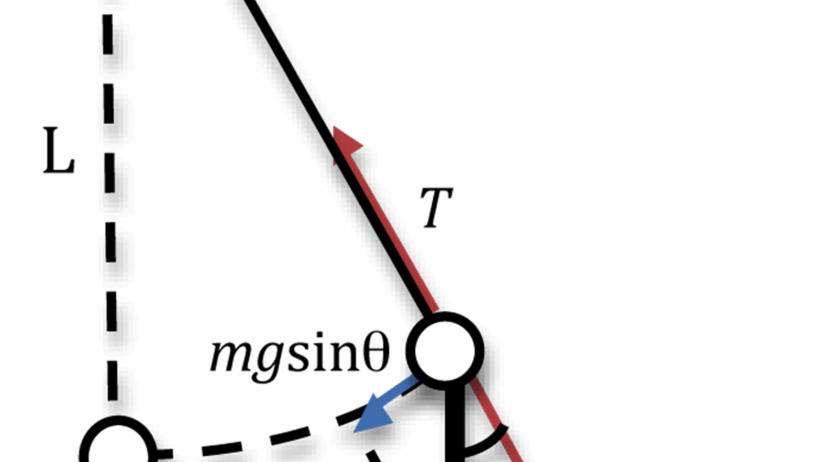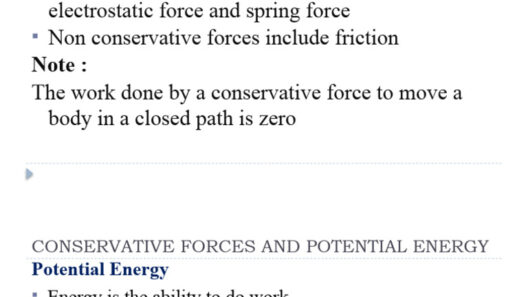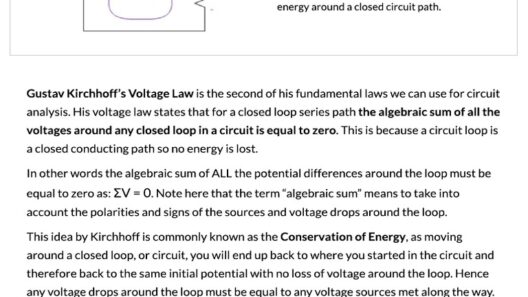When observing a swinging pendulum, one might marvel at the graceful rhythm of its motion. The pendulum, often a staple in physics demonstrations, epitomizes the principles of mechanical energy conservation. It captivates students and observers alike, inviting them to consider not just the mechanics at work but also the broader implications of energy transformation in our everyday lives.
At its core, a pendulum consists of a mass, known as the bob, suspended from a pivot point by a string or rod of negligible mass. As the pendulum swings, it exhibits a fascinating interplay between two primary forms of mechanical energy: kinetic energy and potential energy. This relationship can be intricately understood through the lens of classical mechanics, which explains how energy exists in potential form at its highest point and transforms into kinetic energy as it descends.
When the pendulum is lifted to one side, it gains gravitational potential energy, a function of its height above a defined reference point. The potential energy ((PE)) can be characterized by the equation:
PE = mgh
Where (m) is the mass of the bob, (g) is the acceleration due to gravity (approximately (9.81 , m/s^2) on Earth), and (h) represents the vertical height. At this peak position, the pendulum momentarily comes to a halt, demonstrating maximum potential energy and zero kinetic energy. The tranquility of this moment starkly contrasts with the dynamic activity that ensues.
As the pendulum begins its descent, gravitational forces propel it towards the lowest point of its trajectory. During this descent, gravitational potential energy is converted into kinetic energy. The kinetic energy ((KE)) can be expressed as:
KE = frac{1}{2}mv^2
In this equation, (v) denotes the velocity of the bob. As the pendulum reaches the nadir of its swing, all the potential energy has been transformed into kinetic energy, yielding maximum velocity. This moment is particularly notable; no energy is lost to external forces, illustrating the principle of mechanical energy conservation.
As the pendulum ascends again, the cycle continues—the kinetic energy diminishes and the potential energy increases. This continuous oscillation, assuming no external influences such as air resistance or friction at the pivot point, serves as a perfect analogy for energy conservation in a closed system. In real-world applications, however, these ideal conditions are infrequently realized; energy is often dissipated through heat, sound, or other means, thus introducing the concept of non-conservative forces.
Despite the inevitable loss of energy in practical scenarios, the pendulum still serves as an invaluable model. It provides insights into systems engineered to harness energy efficiently, reflecting critical considerations in renewable energy technologies. By understanding energy transformation in systems like the pendulum, we can gain deeper insights into improving energy efficiency and minimizing waste in various applications.
The pendulum exercise elucidates the significance of initial height and mass. It effectively demonstrates that, regardless of size, all objects subjected to gravitational force exhibit similar behavior, if released from the same height. This universality underscores the fundamental laws of physics governing motion and energy, creating a compelling narrative that transcends mere mechanics.
In addition to its educational value, the pendulum’s oscillatory motion possesses an aesthetic quality that draws spectators. The rhythmic back-and-forth, with its predictable cadence, invokes a sense of harmony and balance. Such observations often extend beyond physics into concepts of time and the cyclic nature of life itself, prompting philosophical musings on stability and change.
Furthermore, the construction of a pendulum offers tactile engagement. Experimenting with variations—altering the length of the string, the mass of the bob, or the angle of release—can yield a plethora of outcomes, reinforcing theoretical concepts through practical application. This hands-on exploration fosters critical thinking and creative problem-solving, essential skills in an age increasingly influenced by scientific inquiry.
Beyond the classroom, pendulum demonstrations resonate in various fields, from engineering to environmental science. For instance, the principles illustrated by the pendulum can be applied to understand phenomena in wind turbines or hydroelectric plants, where energy transfer occurs through mechanical means. In contemplating climate change, the lessons gleaned from pendulum dynamics may inspire more efficient energy production methods, emphasizing sustainability—a crucial consideration for the future of our planet.
Moreover, the pendulum represents the essential connection between physics and the natural environment. As we consider the conservation of energy on a macro scale, we may reflect on the cyclical processes present in our ecosystems. The transformation of energy, from sunlight to biomass, mirrors the pendulum’s oscillations, highlighting the interconnectedness of all living systems. This metaphorical bridge between physics and ecology invites deeper contemplation on how human behavior influences the world around us.
In conclusion, the swinging pendulum stands as a perfect physics demonstration, illustrating the laws of mechanical energy conservation while inviting deeper reflections on the world we inhabit. Its graceful motion, grounded in scientific principles, serves not only as a mechanism of education but also as a reminder of the balance and harmony present in nature. As we grapple with the challenges of climate change and the pursuit of sustainable living, the lessons drawn from this simple yet profound demonstration remain ever relevant. Understanding how energy is conserved and utilized not only informs our scientific literacy but also illuminates pathways towards a more sustainable future.








